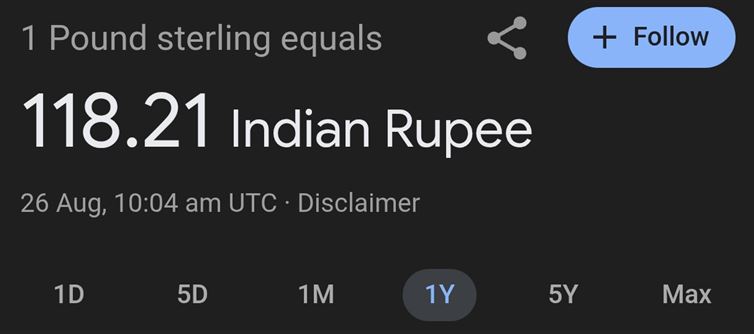
1. UK Talking IMF Bailout, Pound Still Flexes
Even as whispers float about the UK possibly knocking on the IMF’s door due to ballooning debt and fiscal cracks, the british Pound refuses to bend. Instead, it’s flexing its muscles — climbing against major currencies and even smirking at the Rupee.
2. 1 Pound = 118 Rupees: The Humiliation is Real
Once upon a time, one rupee was almost at par with the pound (yes, during independence). Fast forward to today — ₹118 for a single pound. The math isn’t just depressing, it’s humiliating for the world’s fifth-largest economy.
3. Pound Gains on Jobs and Wages, Rupee Crawls on RBI Life Support
The UK’s pound is being lifted by solid employment data, wage growth, and the bank of England’s tightrope walk on rates. Meanwhile, the Rupee isn’t "competing" — it’s surviving, only because the RBI keeps throwing lifeboats in the form of interventions. Without them, the slide would be much uglier.
4. PPP Exposes the Rupee’s Naked Weakness
On paper, in real purchasing power, the Rupee should be far stronger — PPP estimates suggest ₹20–21 per dollar. In the real forex market? Try ₹147 per dollar. That gap is not just a number; it’s a slap on the face of the Rupee’s "market value."
5. Managed Float or Managed Fall?
India’s currency regime is often called a “managed float,” but it looks more like a managed decline. The RBI’s interventions ensure "gradual depreciation," all in the name of export competitiveness. Translation: the Rupee is allowed to keep getting weaker — just slowly enough for us not to scream every morning.
👉 Bottomline: Even a crisis-ridden pound looks like royalty compared to the battered Rupee. If this isn’t a wake-up call, nothing is.




 click and follow Indiaherald WhatsApp channel
click and follow Indiaherald WhatsApp channel